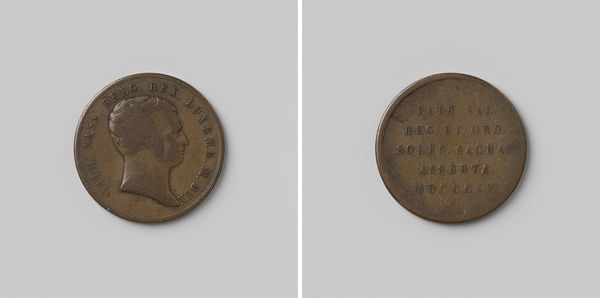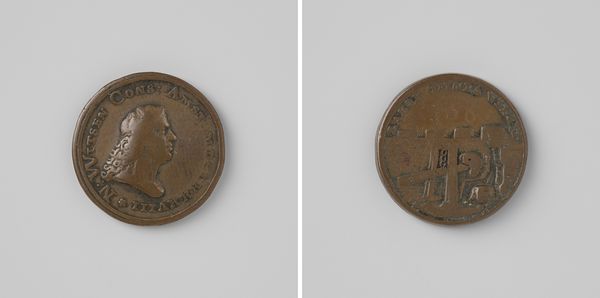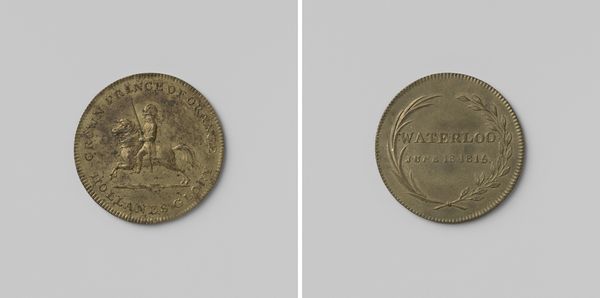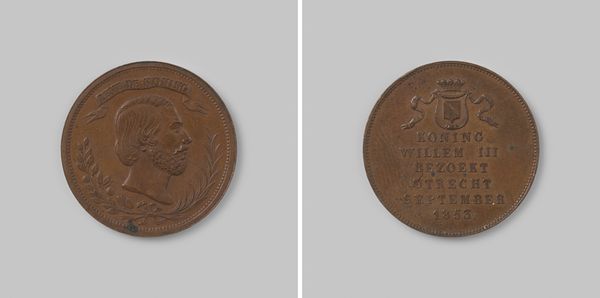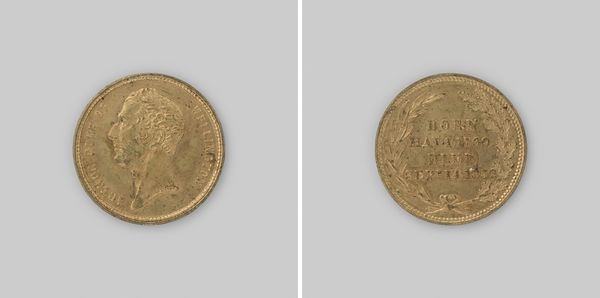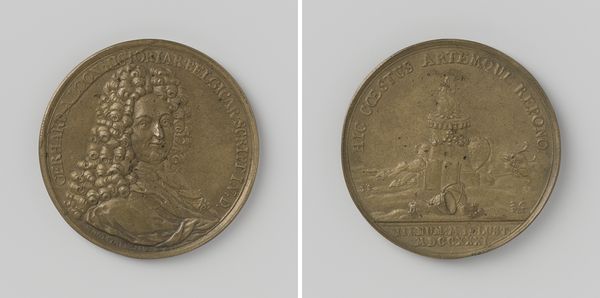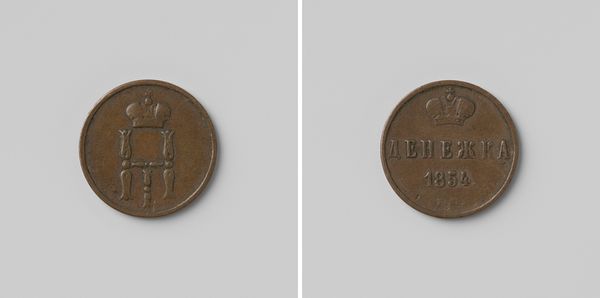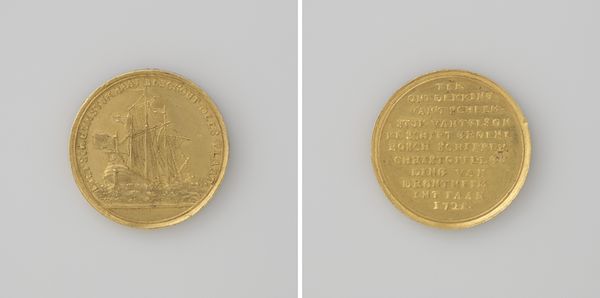
print, metal, engraving
#
portrait
#
dutch-golden-age
# print
#
metal
#
engraving
Dimensions: diameter 2.7 cm, weight 96 gr
Copyright: Rijks Museum: Open Domain
Editor: So, this is a medal commemorating the inauguration of Willem III as King of the Netherlands in 1849. It’s an engraving made of metal. The figure of the king appears very… formal and somewhat austere, doesn’t it? How do you interpret its message within its historical moment? Curator: It’s crucial to consider how these medals functioned politically. They were circulated to disseminate a specific image of power. What strikes you about Willem III’s presentation of himself here? Editor: I guess, looking closer, it's aiming for authority. The regalia, the stance... Is this sort of image part of solidifying the monarchy’s power after the constitutional reforms of 1848? Curator: Exactly! These objects were intended to forge a renewed sense of national identity and allegiance. Think about who would receive and possess such a medal. How might that shape public sentiment towards the monarchy? Editor: So it’s not just a portrait; it's really carefully crafting a political image, distributing it widely, shaping how people think about the King, the monarchy, and even their nation... fascinating! Curator: Indeed. This medal speaks to the interplay between art, political propaganda, and the construction of national identity in the 19th century. A tiny object with immense symbolic weight. Editor: I hadn't thought about medals as being these little carriers of political weight, creating feelings about the monarchy in the people. This makes me want to delve deeper into art as a way of influencing popular opinion in history. Curator: Precisely! Recognizing the power of visual communication unlocks whole new ways of understanding the past.
Comments
No comments
Be the first to comment and join the conversation on the ultimate creative platform.

